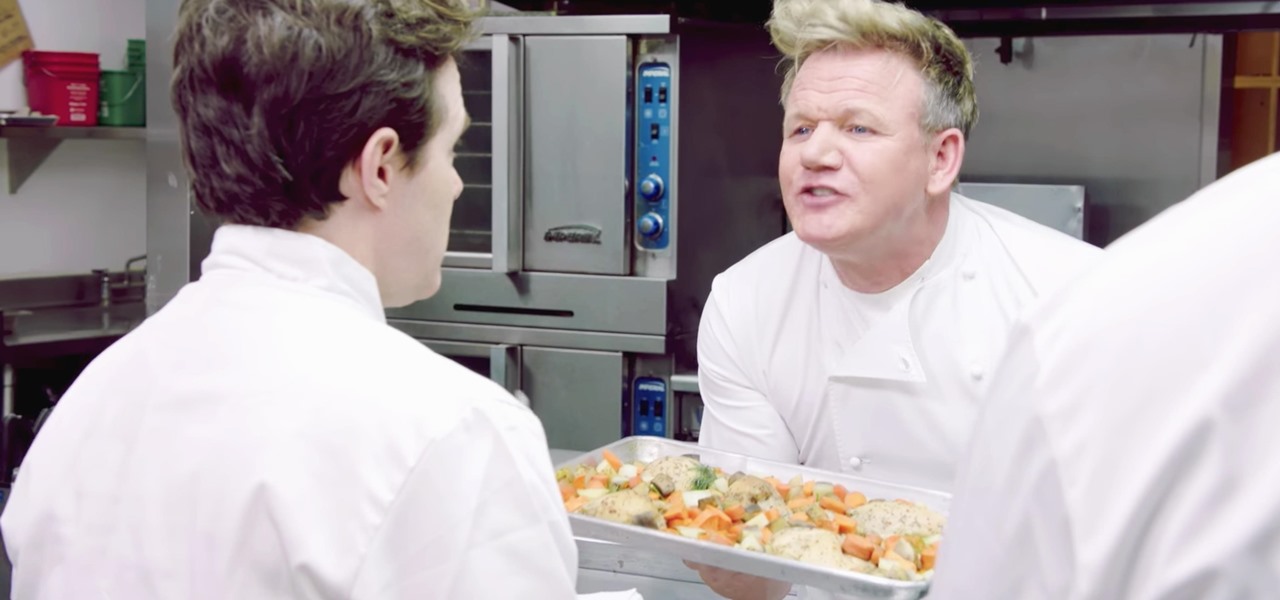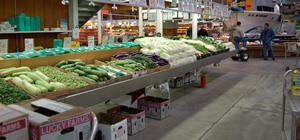The food TV chefs prepare make our mouths water. From one scrumptious creation to another, they fly through preparation without frustration or error. They make us think we can do the same with similar ease and delectable, picture-perfect results. Some of us have noticed, though, that these TV chefs don't always adhere to the same safe food handling guidelines we've been taught to follow.
A recent study in the Journal of Public Health by Edgar Chambers IV of the Sensory Analysis Center at Kansas State University, his research assistant at the time, Curtis Maughan, and Sandria Godwin of the Didactic Program in Nutrition and Dietetics at Tennessee State University, confirmed our observations and fears: TV chefs don't do a good job of modeling safe food handling.

The take-home message of the study is that it might be better to sample a TV chef's food with your eyes than to actually eat it. Even try to recreate the dishes at home if you feel inspired, but wash your hands often, tie your hair back, don't touch your nose or mouth, don't taste with utensils you then reuse, don't lick your fingers, and make sure to cook your meat adequately.
Not Your Usual Scientific Study — This Was Much More Fun
Fun aside, this was a well-designed study that relied on observers armed with a checklist to see which chefs exhibited positive and negative food handling behaviors.
Reviewers observed 100 episodes of cooking shows, chosen at random from those available through cable or online services such as Hulu, Netflix, or Amazon. They analyzed 24 different chefs on 30 different cooking shows — some chefs appeared on more than one show. The episodes lasted 20 to 40 minutes and aired between January and October of 2015.
All the big name shows and TV chefs were included:

The reviewers were tasked with completing a questionnaire developed for the study for each episode watched. The behaviors on the questionnaire followed recommended practices from the Fight Bac! Program. This program follows four easy-to-remember elements — clean, separate, cook, and chill, which promote safe food handling and cooking.
The questionnaire included observations of both positive and negative behaviors. Positive behaviors included items like washing hands, washing produce, and indicating correct internal temperature to assure meat was cooked properly. Negative behaviors were actions such as using the same cutting board for raw meat and ready-to-eat items, licking fingers, touching hair, and eating while cooking.

The chefs in the study may be more careful when they cook for people; They might cut corners when they are under the time constraints of producing a TV segment. That said, every single chef made at least one move that could have caused contamination of the food they were preparing. Chef Curtis Stone was the biggest violator of safe food prep practices.
Here are the chefs who were observed at least once doing each of these bad cooking behaviors. These are pretty gross moves that most of us know not to make.
- Raw and ready-to-eat items were shown touching: Curtis Stone, Bobby Flay, James Reeson, Martha Stewart, Nigella Lawson.
- Ready-to-eat items were cut on same cutting board as meat: Curtis Stone, Giada De Laurentiis, Gordon Ramsay, Lidia Bastianich, Jamie Oliver, Nigella Lawson.
- Licked fingers or touched head or hair: Curtis Stone (16 times!), Bobby Flay, Ching-He Huang, Emeril Lagasse, Gordon Ramsay, Jamie Oliver, Jean-Georges Vongerichten, Ree Drummond, Sunny Anderson.
Just so you know that not all chefs used poor technique, these chefs...
- Washed or changed their cutting board after using it with meat: Jamie Oliver, Kelsey Nixon, Michael Symon, Ree Drummond, Bobby Flay, Emeril Lagasse, Fernando Desa.
Crying Fowl
One big problem the TV chefs had was how they determined when meat was adequately cooked.

USDA guidelines say to use a thermometer to measure the internal temperature of the meat. The temperature should meet or exceed those on the USDA chart below before removing the meat from the heat source.

Nearly all of the chefs (96%) told the viewers that color of meat was a good way to determine doneness, and 88% of them used the length of cooking as a way to decide the meat was cooked.
The report's researchers didn't stop at observing. They designed a study to see if they could influence and promote safe cooking of poultry.
A Follow-Up Study to Improve Food Handling of Poultry
The researchers worked with Delores Chambers, colleague of Chambers IV at Kansas State University, in a follow-up study to get people to handle raw poultry more safely. And they went a step further; they gathered data as to how successful their method was and published the results.
Published in the August 2016 issue of the Journal of Food Protection, the new study asked 155 people to prepare a Parmesan sesame chicken breast and a mushroom turkey burger following recipes that were given to them by the researchers. Some of the recipes included reminders of when to wash their hands, as well as when and how to measure the internal temperature of the meat. Other recipes did not contain this information.
Below is an example of the same recipe for the mushroom turkey burger containing safe food handling instructions given to the test subjects. Safety instructions were bolded.

All study cooks who used recipes containing safety instructions washed their hands significantly more often than cooks whose recipes did not remind them to wash their hands.
Thermometers were used to test the chicken temperature by 85% of the people who were instructed to do so, compared to 30% of those who weren't. Results were similar for testing the temperature of the turkey burger.
Should recipes contain these types of safety instructions, the study participants were asked?
Although it is uncertain if consumers would continue to demonstrate improved behaviors when preparing recipes that incorporate food safety instructions, the responses to the survey indicate that the majority of consumers would use similar recipes at home if they were available.
One thing we do know — TV chefs might be our culinary idols, but we shouldn't look for them for tips on safe food preparation — just tasty food preparation.
Just updated your iPhone? You'll find new emoji, enhanced security, podcast transcripts, Apple Cash virtual numbers, and other useful features. There are even new additions hidden within Safari. Find out what's new and changed on your iPhone with the iOS 17.4 update.



























Be the First to Comment
Share Your Thoughts